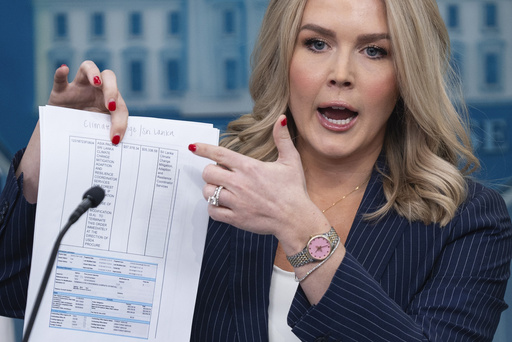
This week, the White House prevented journalists from the Associated Press (AP) from covering three public events involving President Donald Trump, including two that took place in the Oval Office. This action sparked considerable debate, with some questioning the justification for barring the journalists from these appearances.
The rationale for such access stems from long-standing traditions, principles of independent journalism, and the First Amendment’s protection of a free press. Established in 1846, the AP serves as a crucial source of objective news, delivering information to billions globally. As a long-time participant in the 13-member White House press pool, the agency has played a vital role in reporting on the presidency and ensuring accountability for over a century.
Members of this press pool are granted access to the president based on the expectation that their reporting will be shared across various media outlets, congressional offices, and the broader public. However, the Trump administration’s recent decision to restrict the AP’s presence was reportedly linked to a directive requiring the outlet to change the designation of “Gulf of Mexico” to “Gulf of America.” The AP has maintained its stance on referring to it as the Gulf of Mexico while also acknowledging Trump’s preference.
The situation raises several First Amendment concerns. The amendment guarantees freedoms concerning speech and press, making it clear that governmental interference is unacceptable. AP Executive Editor Julie Pace articulated that the White House’s actions effectively punish the organization for its editorial decisions, aligning such retaliation with a flagrant breach of First Amendment rights. In correspondence with Trump’s Chief of Staff, Pace expressed that intentional government actions against the press based on its output are fundamentally unjustifiable.
The White House countered by noting the AP’s presence at one of its briefings but reiterated its view on media access. Press Secretary Karoline Leavitt affirmed the administration’s prerogative in determining who may enter the Oval Office, stating, “Nobody has the right to go into the Oval Office and ask the president of the United States questions.”
However, it is important to note that press pool membership is determined collectively by the press corps itself, aimed at ensuring comprehensive representation across various media platforms. The dynamics of this relationship are designed to be contentious, fostering an environment in which the press can hold the president and the administration accountable regarding taxpayer-funded actions.
The role of a free and questioning press is crucial for citizen engagement, as exemplified by congressional reporters who can freely navigate Capitol Hill to ask members of Congress questions on various issues. While the White House serves as a more intimate venue with tighter access controls, it remains a space that ultimately belongs to the public.
As Kathy Kiely, a professor at the Missouri School of Journalism, highlighted, the media acts as a liaison for global audiences interested in the president’s actions who cannot attend events in person. Reporters are tasked with delivering unbiased information that transcends the self-serving narratives often propagated by the president and his communications personnel.
Historically, the relationship between the press and the presidency has evolved, with notable instances marking the beginning of press involvement in such settings dating back to 1881 when an AP reporter provided updates on President Garfield’s health after he was shot. Today, the press pool has grown to include diverse media representatives who accompany the president at pivotal moments, thereby ensuring that public and global audiences remain informed.
The press pool operates under strict guidelines to maintain decorum and respect, acknowledging the significant responsibility it bears in relaying events that occur in the Oval Office. Members are trained to stand when the president enters and adhere to standards that promote professional conduct, even in more tumultuous environments.
As past events have shown, such as the tragic assassination of President John F. Kennedy, having reporters on-site allows for timely and accurate accounts crucial to understanding the unfolding situation. Eyewitness reports serve to counter the often rampant speculation that can arise in the absence of independent reporting.
Multiple presidents have utilized alternative communication methods to reach the public, navigating around traditional media channels. President Franklin Delano Roosevelt famously employed radio for his fireside chats to connect with Americans during challenging governmental reforms. More recent developments in communications technology, including social media and podcasts, continue to reshape presidential interactions with citizens as seen in the ongoing 2024 election cycle.
Additionally, historical government actions, ranging from the Sedition Act signed by John Adams to 20th-century threats by Woodrow Wilson, highlight the ongoing tensions between governmental authority and a free press. The Founding Fathers recognized the necessity of a robust press in promoting a healthy democracy. As Thomas Jefferson once noted, he would prefer a government without newspapers over newspapers without a government, underscoring the integral role of free expression in the American democratic process.

